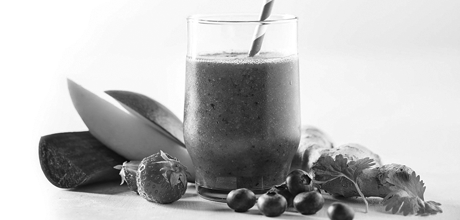
We all know we should eat more fruit and vegetables… but we don’t. The key to solving this lies in convenience: if we make it convenient to eat more of the healthy food and we will. Here are some practical tips:
Make them ready-to-eat
After buying your fruit and vegetables, wash, prep and package them. Buy lots of apples, grapes, carrots and bell peppers. Wash the apples and the grapes and put them on display where you can see them or in food containers – all ready to eat. Sliced apples taste great with honey and cinnamon or with peanut butter (watch portion size!). Wash the bell peppers and carrots, peel them, and put in the fridge for a quick and easy grab-a-snack.
Make smoothies
Another very convenient way to get your greens in is to blend them in a smoothie. Bananas can mask the taste of spinach and even broccoli and it makes a cost-effective blend. Blend together an apple, a ripe banana, a handful of spinach and two cups of water and you are pretty much set with your 5-a-day.
Make it a challenge
Adding vegetables to every meal is a challenge but it can be done – give it a go. You can always add some lettuce to your sandwich or a sliced tomato and cucumber salad with a tablespoon of olive oil will be a great edition to any dinner. Whatever you eat has to come with a vegetable in it – these are the rules. Or challenge yourself to a fruit-a-day. Pick a fruit beforehand and make sure you have it with breakfast or lunch on the following day.
Make your own toppings
Always buy plain yogurt and make your own fruit toppings for them. Dice apples, bananas, peaches and add some honey to the mix.
Don’t hide them away
Very often we have the best of intentions to eat more fruit and veggies and we buy a lot and stuff the fridge and then… don’t eat them. It becomes an out of sight – out of mind kind of situation. To avoid that, keep the fruit that doesn’t need refrigeration on countertops and tables where you can see them and put the rest in the middle of your fridge, not in the bottom compartments where you won’t see them. The more you see them, the more you’ll want one.
Have a meatless day once a week
See if you can make a meal just using some vegetables. You can have a vegetarian bean curry or bake sliced tomatoes with an aubergine and some feta cheese in foil. A vegetable-based dinner can taste great. Pick a day a week and make it “meatless”.
Get creative:
- Use mashed avocado instead of mayonnaise on sandwiches.
- Mash cauliflower in with your potatoes.
- Use lettuce instead of bread: you can make ground pork baskets with lettuce or have it instead of a wrap for your diced grilled chicken.
- Frozen vegetables are extremely convenient and will go nicely with pasta and frittatas.
- Make apple crisps: 1) slice apples thinly 2) spread them out into one layer on a baking sheet 3) sprinkle one side of the apples with cinnamon and honey 4) bake in the oven at 200F (90ºC) degrees for 2.5 hours.
